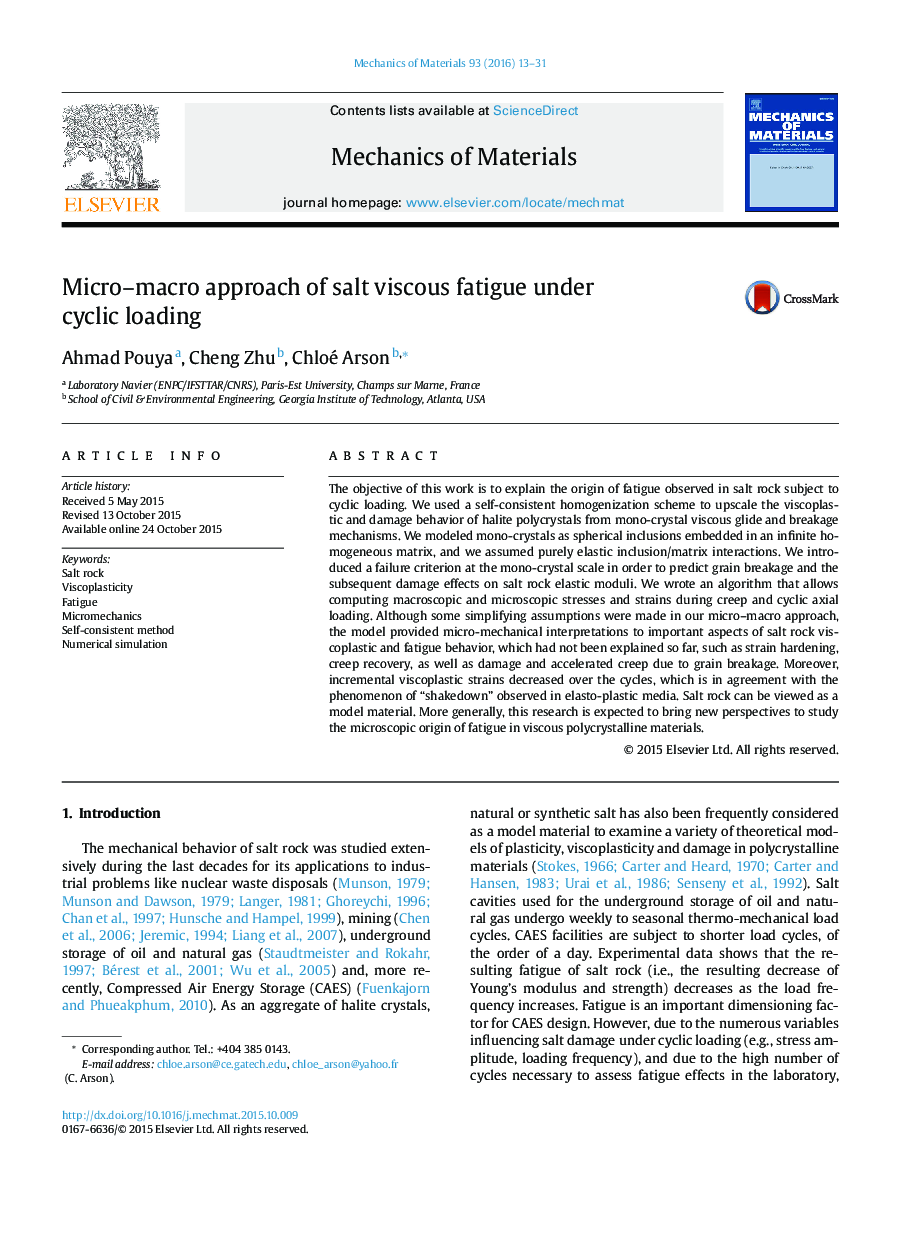| Article ID | Journal | Published Year | Pages | File Type |
|---|---|---|---|---|
| 800682 | Mechanics of Materials | 2016 | 19 Pages |
•Salt rock fatigue induced by cyclic loading is modeled by upscaling grain viscoplastic deformation and breakage.•A failure criterion is introduced in a self-consistent homogenization scheme initially proposed for visco-plastic materials.•The model captures strain hardening, creep recovery, damage and accelerated creep due to grain breakage.•Incremental viscoplastic strains decrease over the loading cycles, which is in agreement with the phenomenon of “shakedown”.
The objective of this work is to explain the origin of fatigue observed in salt rock subject to cyclic loading. We used a self-consistent homogenization scheme to upscale the viscoplastic and damage behavior of halite polycrystals from mono-crystal viscous glide and breakage mechanisms. We modeled mono-crystals as spherical inclusions embedded in an infinite homogeneous matrix, and we assumed purely elastic inclusion/matrix interactions. We introduced a failure criterion at the mono-crystal scale in order to predict grain breakage and the subsequent damage effects on salt rock elastic moduli. We wrote an algorithm that allows computing macroscopic and microscopic stresses and strains during creep and cyclic axial loading. Although some simplifying assumptions were made in our micro–macro approach, the model provided micro-mechanical interpretations to important aspects of salt rock viscoplastic and fatigue behavior, which had not been explained so far, such as strain hardening, creep recovery, as well as damage and accelerated creep due to grain breakage. Moreover, incremental viscoplastic strains decreased over the cycles, which is in agreement with the phenomenon of “shakedown” observed in elasto-plastic media. Salt rock can be viewed as a model material. More generally, this research is expected to bring new perspectives to study the microscopic origin of fatigue in viscous polycrystalline materials.
